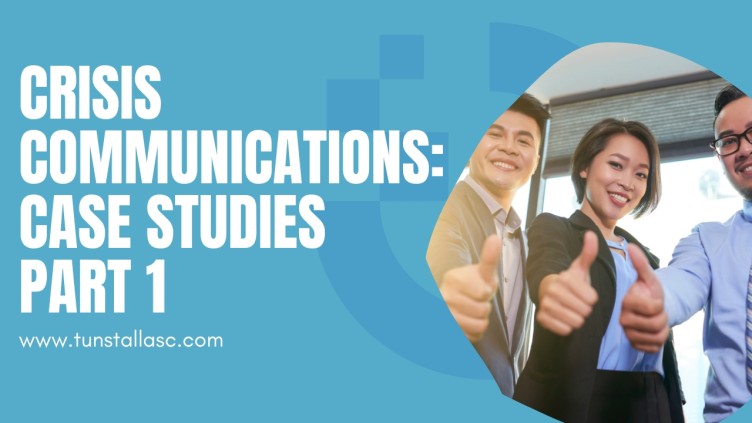Following on from the last newsletter on crisis management, it is critical we also address broader media management issues, in particular social media. Let’s reset before moving on and face a few facts. The Asian CEO who is the target reader of this newsletter is almost certainly a digital immigrant. That is someone who has not grown up in the digital world as a digital native but someone who is learning to adapt and find their way in a world of constant, online, fully informed media.
This used to be called ‘Social Media’ but is now just media. The average customer or employee or family member is now attuned to the idea that ‘news’ information that would previously be provided to them perhaps once an hour by television/radio or once a day by the ‘old media’ of newspapers is now available all the time, 24/7/365. The constant flow of newsfeed information from not only specialist new sites but also non-specialist peer-sharing networks has changed forever the way a company needs to deal with crises.
If the digital immigrant CEO doesn’t ‘get’ the full suite of social media communication media there needs to be a support team in the organization that does. This seems relatively easy to achieve by hiring carefully selected and guided 19-year-olds. But that’s only a small part of the solution. Today, the CEO himself must step up and be accountable.
Let’s consider some case studies of good communication management by CEOs. Then we will look at some less good examples.
The Good – AirAsia’s response to the loss of Flight 8501

Here is an aviation case study of how to manage these new media interfaces correctly – and genuinely from the heart. The study concerns the coordinated response by Tony Fernandes and the Air Asia team to the tragic loss of Flight 8501 on the early morning of 28th December 2014. Tony’s Twitter messages from day zero of the crisis onwards were a deeply sensitive combination of sympathy, courage, calm, and clarity. A selection is shown here and is a lesson to the world from an Asian CEO as to how a modern crisis should be managed and how the CEO leads from the front.
In perhaps the most poignant message Fernandes tweeted about traveling to Indonesia on Friday 2nd January 2015 to retrieve the body of flight attendant Khairunnisa “Nisa” Haidar, and his journey to escort the body back to Haidar’s Indonesian hometown. “I’m arriving in Surabaya to take Nisa home,” he wrote. “I cannot describe how I feel. There are no words.”
The ability to communicate transparently and genuinely in the middle of such a tragedy has an overwhelming impact on the perception of the next of kin, employees, partners, customers, and other stakeholders. Arguably the compassionate and mature response in this situation enhanced the reputation of both Fernandes and AirAsia despite the crisis. Later in this series, we will deal with these touchstones for future success: credibility, personalization, trust, transparency, and authenticity. Whether the corporation is in crisis or business-as-usual mode these aspects of management practice are of increasing if not fundamental importance to future corporate success.

The Bad – Malaysia Airlines’ response to the loss of Flight MH370
In marked contrast to Fernandes, the two Malaysian airline tragedies of 2013 and 2014 were, sadly, examples of what not to do in times of crisis. Slow and inaccurate information flows, poor quality press briefings, and a sense of an uncaring government-owned and controlled monolith. All of these combined to frustrate and even anger family members and next of kin.
This lack of connection and empathy in a crisis led to repeated clashes with not surprisingly emotional family members, particularly in China, in connection with the mystery disappearance of MH370 which happened on 8th March 2014. In just one meeting of March 19th in Beijing the following quotes reported to be from family attendees show just how far the airline was from achieving successful empathy with those affected.
“We do not have any other way of dealing with this other than to be angry and to cry. Your way of dealing with it is either lying or playing a shameful role,”,
“Look what we have been talking about today — trivial matters,” the man shouted angrily. “What are we coming here for? We just want to know where our relatives are and where the plane is.”
A woman marched to the front of the hall demanding to know why she had to present her marriage certificate to prove her husband was on the plane, to get a room at the hotel.
“My husband was on board, and our relatives have had nowhere to stay for two days!” the woman shouted as other family members encouraged her to confront the airline official.
Amid angry exchanges, one of her male relatives lunged aggressively at the neck of a man he believed to be an airline administrator, and another shouted:
“What sort of person would pretend that their husband is on board the plane?
There is a clear distinction between the behavior of the leadership and organization in Air Asia when compared with Malaysia Airlines. Although the cases happened within a year or two of each other there are dramatic lessons to be learned in the crisis communication gulf between the two examples.
The loss of MH370 was a highly unusual and distressing case for everyone involved and extremely difficult to manage. The total disappearance of an aircraft with little evidence means that no one can move on. The whole objective of a business continuity management system is to act in a manner that permits the organization to get back to business as usual, preferably as fast as possible.
In a case with limited confirmed plane wreckage and no bodies recovered, there is no closure for anyone. For families, this is particularly difficult as every new conspiracy theory or wild idea cruelly rekindles hope that loved ones may still be alive. For the corporation, there is no opportunity for the accident to become history. Employees and their families continue to work with emotional open wounds. The culture of the company takes a long-term sociological hit which there is no way to bounce back from. To use the analogy from a previous newsletter, the shape of the ball is changed forever by the risk impact.

The tools and information available to the CEO and the response from the individual in the immediate aftermath of a crisis are often critical to the outcome not only in the short term but also medium and sometimes long term too. Clear information flows, and a coordinated approach by the company’s internal resources and external advisors all support the CEO’s initial response. Key considerations are clarity, transparency, and where appropriate empathy. Building a genuine relationship is critical for success.
In an age of almost perfect information what works best is transparency. Being truthful – but also being accurate. Not over-committing. Apologizing for the lack of answers when necessary but also proposing solutions on how the gaps in data will be overcome and when, if possible.
In essence, the CEO must be seen to be present as a leader in a serious crisis, empathizing and driving the search for solutions. This messaging is as important to build confidence for employees and other internal stakeholders as it is for external parties. Winning and then sustaining this initial battle will place the whole corporation on the ‘side of the angels’. This can be maintained for the whole of the crisis war if communication happens quickly and correctly. Fail to respond decisively and with empathy and everyone from the corporate office will be seen to represent the ‘side of the devils’. Media content, both formal and informal will quickly (perhaps within minutes) lump the whole company in as part of the problem, not part of the solution.
In our next newsletter, we will address other examples of social media mismanagement and the consequences of failure.
Franck Baron Kelvin Wu Samantha Teo Ferine Tan Kate Brato Takashi Kubo Kei Masuyama Suchitra Narayanan Maxwell Davis Ma. Victoria Tan Annacel Natividad Cecilia Cheng Joseph Ng Mujalin Boonrod Jan Mumenthaler Sharon Shi Keith Xia Maggie Sun Soni Srivastava Nitin Nair Danny Lin Melody Caffin Rehana Box Jagath Guru Neggie Nice Abella Gretchel Maglasang Shilong Yu David Farrell Toong Hou TAN Jacob John Ahmed Tazi Wilson Yeo Stephanie Yip Eunice Teo Desmond Chong, MSc, CBCP, CIPP/A, GRCP, PIOR, SIRM, FRSA James Wong Muhammad Shafie Wan Xin Lim Surita Subash (苏丽大)
#crisiscommunications #crisismanagement #socialmedia #riskmanagement #insurance #resilience #riskmanagers #riskprofessionals #riskandcompliance #APAC #PARIMA #PARIMA2023


